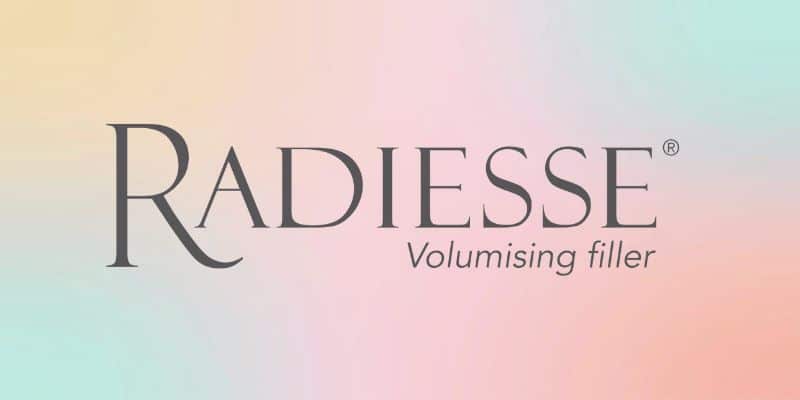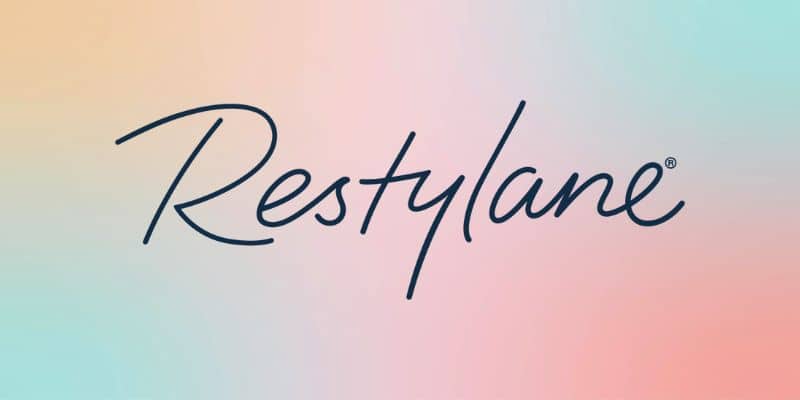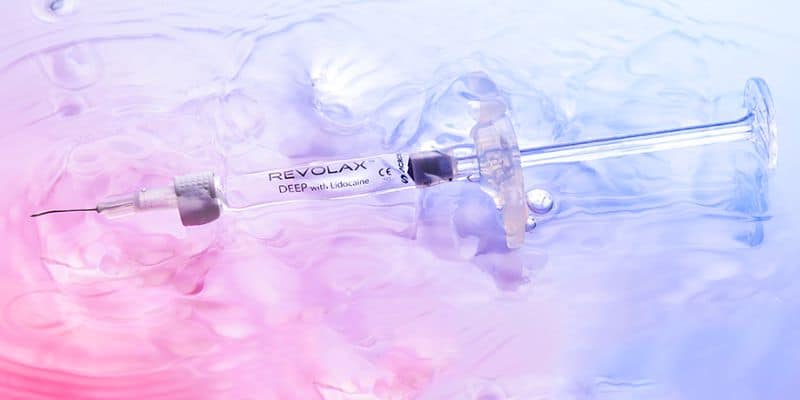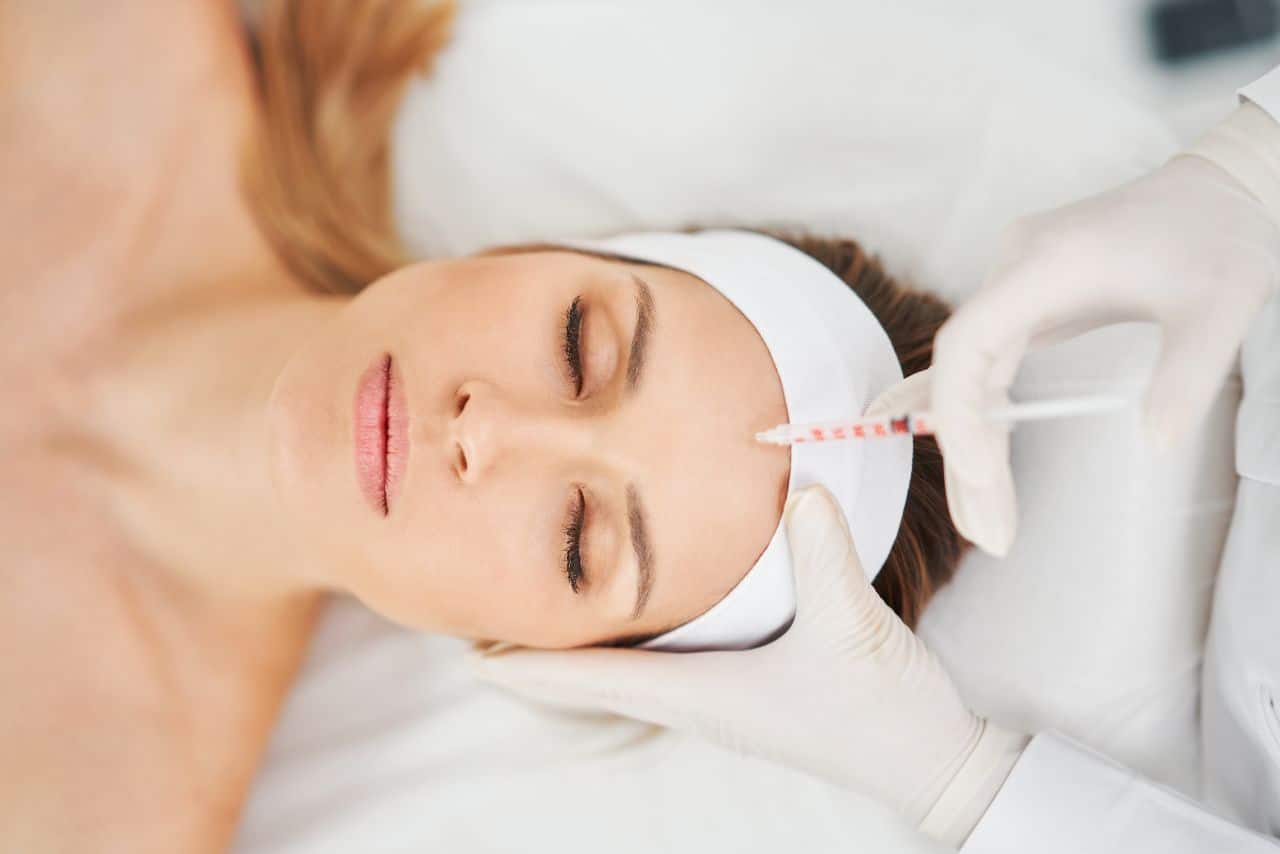
In recent years, the use of dermal fillers to enhance facial features and reduce the signs of aging has become increasingly popular. Dermal fillers are a non-surgical cosmetic treatment that involve injecting a substance, typically made of hyaluronic acid, calcium hydroxylapatite, poly-L-lactic acid, or polymethylmethacrylate, into the skin to plump up areas that have lost volume and smooth out wrinkles and fine lines.
With advancements in technology and techniques, dermal fillers have become a quick and effective way to rejuvenate the face without the need for invasive surgery. As a result, the market for dermal fillers has seen a steady increase in demand over the years, with more people seeking to enhance their features with this non-invasive procedure.
In recent years, dermal fillers have gained a significant amount of attention due to their use by celebrities, such as the Kardashians, to enhance their facial features. This has led to an increased interest in dermal fillers and an influx of patients seeking to achieve a similar look. However, it is important to note that dermal fillers are not just for celebrities and can be used by anyone looking to achieve a more youthful and radiant appearance.
In this article, we will discuss the different types of dermal fillers used for the face, their benefits, and potential risks. Whether you are considering a treatment for the first time or looking to explore new options, this guide will help you navigate the world of dermal fillers and make an informed decision about the best option for you.
Types of Dermal Fillers
Hyaluronic Acid (HA) Fillers
Hyaluronic acid (HA) is a naturally occurring substance in the body that helps to hydrate and plump the skin. HA fillers are made of a synthetic version of this substance and are commonly used to treat wrinkles and fine lines, add volume to the cheeks, and enhance the lips. They are generally considered safe and have a lower risk of side effects than other types of fillers. Some popular brand names of HA fillers include Juvederm, Restylane, and Belotero.
Calcium Hydroxylapatite (CaHA) Fillers
Calcium hydroxylapatite (CaHA) fillers are made of tiny calcium particles suspended in a gel-like substance. They are often used to treat deeper wrinkles and folds, such as the nasolabial folds, and to add volume to the cheeks. They are also sometimes used to enhance the jawline and other facial contours. Some popular brand names of CaHA fillers include Radiesse and Radiance.
Poly-L-lactic Acid (PLLA) Fillers
Poly-L-lactic acid (PLLA) is a synthetic material that stimulates collagen production in the skin, leading to increased volume and firmness. PLLA fillers are often used to treat deeper wrinkles and folds, such as the marionette lines, and to add volume to the cheeks. They require multiple injections over the course of several months and the results can last up to two years. The most popular brand name of PLLA filler is Sculptra.
It is important to note that all types of dermal fillers carry some degree of risk, including swelling, bruising, infection, and allergic reaction. It is important for patients to discuss the potential risks and benefits of each type of filler with a qualified and experienced medical professional before deciding which type of filler is right for you.
Facial Filler Procedures
Dermal fillers are a non-surgical cosmetic treatment that can be used to enhance various areas of the face. They are made up of different substances that are injected into the skin to plump up areas that have lost volume and smooth out wrinkles and fine lines. Dermal fillers are a popular alternative to surgical procedures, as they provide instant results without the need for invasive surgery. Let’s review the most popular procedures that use dermal filler injections in the face, including the benefits and potential risks associated with each one.
Volumize Lips
One of the most popular procedures that use dermal filler injections in the face is lip augmentation. Lip fillers are used to add volume, shape, and definition to the lips. The most commonly used filler for lip augmentation is hyaluronic acid (HA) fillers, such as Juvederm and Restylane. The procedure is quick and relatively painless, with results that last for several months.
Fill in Forehead Lines
Another popular use of dermal fillers is to fill in forehead lines. As we age, lines and wrinkles may form on the forehead due to repetitive facial expressions. Dermal fillers can be used to smooth out these lines and create a more youthful appearance. The most commonly used fillers for this procedure are HA fillers, such as Juvederm and Restylane.
Reshape the Chin or Nose
Dermal fillers can also be used to reshape the chin or nose without the need for surgery. Chin fillers are used to enhance the shape and size of the chin, while nose fillers can be used to smooth out bumps and humps on the nose. The most commonly used fillers for these procedures are HA fillers, such as Juvederm and Restylane.
Plump Cheeks
Another popular procedure that uses dermal filler injections is cheek augmentation. Cheek fillers are used to add volume and definition to the cheeks, creating a more youthful appearance. The most commonly used fillers for cheek augmentation are calcium hydroxylapatite (CaHA) fillers, such as Radiesse and Radiance.
Eliminate Marionette Lines & Nasolabial Folds
Dermal fillers can also be used to eliminate marionette lines and nasolabial folds, which are lines that form around the mouth and nose as we age. The most commonly used fillers for these procedures are poly-L-lactic acid (PLLA) fillers, such as Sculptra, and hyaluronic acid (HA) fillers, such as Juvederm and Restylane.
While dermal fillers provide instant results, it is important to note that all procedures carry some degree of risk, including swelling, bruising, infection, and allergic reaction. It is important to discuss the potential risks and benefits of each procedure with a qualified and experienced medical professional before deciding which procedure is right for you.
Next, let’s take a look at some of the most popular dermal fillers available today, and how they can help address the most common patient concerns.
Radiesse
Radiesse is a dermal filler that is made of calcium hydroxylapatite (CaHA) microspheres, which are suspended in a gel carrier. The microspheres stimulate the production of collagen in the skin, which helps to restore volume and provide a long-lasting result.
Features and benefits
- Radiesse is known for its durability and long-lasting effects, which can last up to 18 months or more.
- The microspheres in Radiesse provide a natural-looking result that integrates well with the surrounding tissue.
- Radiesse can be used to treat a variety of areas on the face, including nasolabial folds, marionette lines, smile lines, chin wrinkles, and more.
Treatment areas
- Nasolabial folds: Radiesse can be used to fill in the deep creases that run from the sides of the nose to the corners of the mouth.
- Marionette lines: These lines run from the corners of the mouth down to the chin, and can make a person look sad or angry. Radiesse can be used to fill in these lines and restore a more youthful appearance.
- Smile lines: Also known as “crow’s feet,” these lines are the result of repeated facial expressions and can be treated with Radiesse.
- Chin wrinkles: Radiesse can be used to smooth out the wrinkles and lines that can form on the chin.
Potential risks
As with any dermal filler, there are potential risks and side effects to be aware of. Some potential risks of Radiesse include:
- Bruising, redness, or swelling at the injection site
- Allergic reaction
- Infection
- Granulomas, or small lumps that can form under the skin
- Migration of the filler to other parts of the face
To minimize the risk of complications, it is important to choose an experienced injector who uses sterile techniques and high-quality products. Patients should also discuss their medical history and any medications they are taking with their injector to ensure they are a good candidate for Radiesse treatment.
Juvederm
Juvederm is a popular and versatile dermal filler brand that uses hyaluronic acid to add volume, hydrate and rejuvenate the skin. The Juvederm family of products offers a range of formulations, each designed to address different areas of the face and specific concerns.
Features and Benefits
- A wide range of formulations and consistencies: Juvederm has a comprehensive range of formulations that provide tailored treatments for the specific needs of each patient. The different types of Juvederm products include Juvederm Ultra, Juvederm Ultra Plus, Juvederm Voluma, Juvederm Volbella, Juvederm Vollure, and Juvederm XC. The various formulations differ in their consistency, strength, and viscosity, making them suitable for treating specific areas of the face and addressing different types of wrinkles, lines, and folds.
- Natural-looking results with minimal downtime: Juvederm is formulated to mimic the hyaluronic acid naturally found in the skin. This ensures that the results are natural-looking and the injections are well-tolerated, with minimal downtime.
- A range of treatment areas: Juvederm can be used to correct moderate to severe facial wrinkles and folds, as well as to enhance facial contours and add volume to the lips. The different formulations offer specific solutions to different treatment areas, including the lips, cheeks, nasolabial folds, marionette lines, under-eye area, and jawline.
- Long-lasting results: Juvederm provides long-lasting results, typically lasting from six to eighteen months, depending on the formulation used. This means that patients can enjoy their new look for a longer time before requiring a touch-up or maintenance treatment.
- FDA-approved and clinically proven: Juvederm is FDA-approved, and extensive clinical studies have shown that it is safe and effective in treating facial wrinkles and folds.
Treatment Areas
- Nasolabial folds (smile lines): Juvederm can be used to fill in the deep lines that run from the nose to the corners of the mouth. This results in a smoother, more youthful-looking appearance.
- Marionette lines: Juvederm can be used to fill in the lines that run from the corners of the mouth to the chin, reducing the appearance of “marionette lines.”
- Lips (lip augmentation): Juvederm can be used to add volume and definition to the lips, resulting in a fuller, more attractive pout.
- Cheeks: Juvederm Voluma is specifically designed to add volume to the cheeks, restoring a youthful fullness to the face.
- Under-eye area: Juvederm can be used to fill in the hollows under the eyes, reducing the appearance of dark circles and bags.
- Jawline: Juvederm can be used to contour and define the jawline, enhancing the natural features of the face.
Potential Risks
- As with any dermal filler, there are potential risks associated with Juvederm, such as redness, swelling, and bruising at the injection site. These side effects are typically mild and resolve within a few days.
- In rare cases, more serious side effects can occur, such as infection, allergic reaction, or vascular complications.
- It’s important to choose a qualified and experienced provider for the injection procedure to minimize the risk of complications. Additionally, it’s important to follow all post-treatment instructions carefully to ensure the best results and reduce the risk of adverse effects.
Restylane
Restylane is a hyaluronic acid-based dermal filler that is used to restore volume to the face, reduce the appearance of fine lines and wrinkles, and enhance facial features. It is a non-surgical option that provides natural-looking results and has a low risk of adverse reactions.
Features and benefits
- Restylane is made from non-animal stabilized hyaluronic acid (NASHA) which is biocompatible, biodegradable and non-toxic.
- It is a versatile product with multiple formulations and is suitable for a wide range of patients.
- Restylane is formulated with Lidocaine to improve patient comfort during the procedure.
Treatment areas
Restylane can be used to treat a variety of areas on the face, including:
- Lips: Restylane is commonly used to add volume to the lips, define the lip border, and correct asymmetry.
- Cheeks: Restylane can add volume to the cheeks, helping to create a youthful, lifted appearance.
- Under-eye area: Restylane can be used to reduce the appearance of dark circles and under-eye bags.
- Nasolabial folds: Restylane can smooth out the creases that run from the nose to the corners of the mouth.
- Marionette lines: Restylane can be used to soften the lines that run from the corners of the mouth to the jawline.
Restylane has several formulations that are tailored to specific areas of the face. Here are some of the most common formulations and their benefits:
- Restylane-L: This formulation contains Lidocaine, a local anesthetic that helps to minimize discomfort during the injection process. It is commonly used for lip augmentation, filling in wrinkles and lines, and adding volume to the cheeks.
- Restylane Kysse: This formulation is specifically designed for lip augmentation and smoothing out fine lines around the mouth. It provides a natural-looking and subtle enhancement to the lips, while also reducing the appearance of smoker’s lines.
- Restylane Lyft: This formulation is used to restore volume and fullness to the cheeks, midface, and nasolabial folds. It provides a lifted and youthful appearance, while also reducing the appearance of deep lines and wrinkles.
- Restylane Refyne: This formulation is used to treat moderate to severe facial wrinkles and folds, such as nasolabial folds and marionette lines. It provides a smooth and natural-looking result, while still maintaining the natural movement and flexibility of the face.
- Restylane Defyne: This formulation is similar to Restylane Refyne, but is specifically designed to treat deep facial wrinkles and folds. It provides a more dramatic improvement in the appearance of nasolabial folds and marionette lines, while still maintaining natural-looking results.
As with any dermal filler, there are potential risks and side effects to be aware of. While Restylane is generally considered safe, patients may experience mild swelling, redness, bruising, and tenderness at the injection site. In rare cases, patients may experience more severe side effects such as infection or allergic reaction. It is important to choose a qualified and experienced injector who uses sterile techniques and high-quality products to reduce the risk of complications. Patients should also discuss their medical history and any medications they are taking with their injector to ensure they are a good candidate for Restylane treatment.
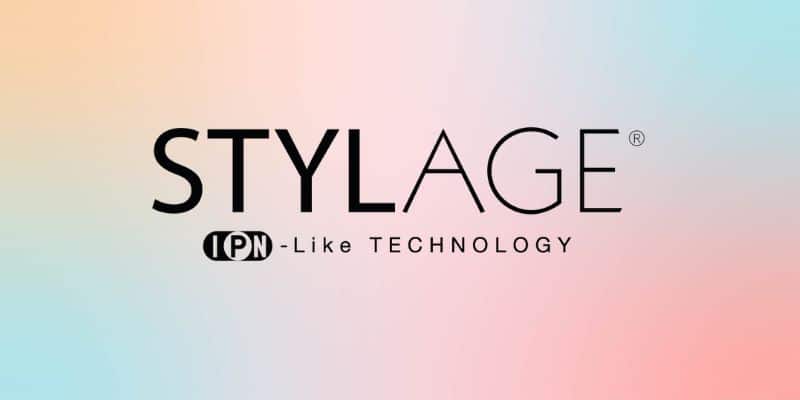
Stylage
Stylage is a hyaluronic acid-based dermal filler brand that has gained popularity among both patients and healthcare providers in recent years. Hyaluronic acid is a natural substance found in the body that helps to hydrate and plump the skin. When injected into the skin, hyaluronic acid can restore volume, smooth out wrinkles and fine lines, and enhance facial features.
One of the main benefits of Stylage is that it is a long-lasting filler, with results lasting up to 12 months. This means that patients can enjoy their refreshed, youthful appearance for a significant amount of time before needing a touch-up treatment. Additionally, Stylage contains mannitol, an antioxidant that helps to reduce inflammation and prevent the breakdown of hyaluronic acid. This makes Stylage a great option for those who are concerned with maintaining their results over time.
Stylage has a range of products tailored to specific treatment areas, including Stylage S, M, and L, which are used for fine lines and wrinkles, moderate wrinkles and folds, and deeper wrinkles and volume loss, respectively. Stylage XL is designed for volumizing larger areas of the face, such as the cheeks and chin. Stylage Hydro and Stylage HydroMax are used for hydrating and revitalizing the skin. This variety of formulations allows for a customized approach to facial rejuvenation, as healthcare providers can choose the right product for each individual’s specific needs.
Stylage can be used to treat a variety of areas on the face, including the nasolabial folds, marionette lines, lips, cheeks, and chin. The various formulations of Stylage make it possible to tailor the treatment to the individual’s specific needs. For example, Stylage S is ideal for treating fine lines and wrinkles, while Stylage XL is better suited for adding volume to the cheeks or chin.
As with any cosmetic procedure, Stylage carries some potential risks. These may include bruising, swelling, and redness at the injection site. Some patients may also experience tenderness or itching at the injection site. In rare cases, patients may experience an allergic reaction or infection. It is important to inform your healthcare provider of any allergies or medical conditions before receiving Stylage injections.
In summary, Stylage is a popular dermal filler brand that provides a long-lasting solution for facial rejuvenation. Its range of products tailored to specific treatment areas allows for a customized approach to facial contouring and volume restoration.
Revolax
Revolax is a South Korean brand of hyaluronic acid-based dermal fillers that has quickly gained popularity in the global market for its high-quality ingredients, affordability, and versatility. It is known for its ability to provide natural-looking results and to adapt to the natural movements of the face.
Features and benefits
One of the main features of Revolax is that it is a highly elastic filler. This means that it can adapt to the natural movements of the face, resulting in more natural-looking and longer-lasting results. The product is also highly pure, with a low level of residual chemicals and bacterial endotoxins, which minimizes the risk of adverse reactions and infections.
Another important feature of Revolax is that it contains lidocaine, a local anesthetic. This helps to reduce pain and discomfort during the injection process, making the treatment more comfortable for patients.
The benefits of Revolax include its versatility in treating a wide range of facial concerns, from fine lines and wrinkles to deep folds and volume loss. The range of Revolax formulations, including Revolax Fine, Deep, and Sub-Q, allows for a customized approach to facial contouring and volume restoration.
Revolax is also known for its long-lasting results. Depending on the formulation and the area of treatment, results can last up to 12 months. This means that patients can enjoy their rejuvenated and enhanced appearance for a significant amount of time without the need for frequent touch-ups or repeat treatments.
Treatment areas
Revolax can be used to treat a variety of areas on the face, including the nasolabial folds, marionette lines, lips, cheeks, and chin. The different formulations are designed to address specific concerns and treatment areas. Revolax Fine is used for fine lines and wrinkles, while Revolax Deep is used for moderate wrinkles and folds. Revolax Sub-Q is used for deeper wrinkles and volume loss.
Potential risks
As with any cosmetic procedure, there are potential risks associated with Revolax injections. The most common side effects include bruising, swelling, and redness at the injection site. Some patients may also experience tenderness or itching at the injection site. In rare cases, patients may experience an allergic reaction or infection. It is important to inform your healthcare provider of any allergies or medical conditions before receiving Revolax injections.
Revolax is a popular and versatile dermal filler brand that offers natural-looking and long-lasting results. Its high elasticity and lidocaine content make it a comfortable and safe option for facial rejuvenation. Its range of formulations tailored to specific treatment areas allows for a customized approach to facial contouring and volume restoration. As with any cosmetic procedure, it is important to consult with a qualified healthcare provider to determine the best treatment plan for your individual needs.
Summary
In conclusion, dermal fillers have become increasingly popular as a non-surgical way to rejuvenate the face and address various cosmetic concerns. With a variety of options available, individuals can choose the dermal filler that best suits their needs and preferences, based on factors such as the desired treatment areas, longevity, and potential side effects.
Whether it’s volumizing lips, filling in forehead lines, reshaping the chin or nose, plumping cheeks, or eliminating marionette lines and nasolabial folds, there are a variety of dermal filler options that can help achieve the desired look.
When considering dermal fillers for facial rejuvenation, it’s important to choose high-quality, genuine products that are administered by a qualified professional. By doing so, individuals can achieve natural-looking results that last for a significant period of time.

About the Author: Doris Dickson is a specialist writer for Health Supplies Plus, focusing on the aesthetic medicine industry. She diligently researches cosmetic treatments and products to provide clear, concise information relevant to licensed medical professionals. Her work supports Health Supplies Plus’s commitment to being a reliable informational resource and trusted supplier for the aesthetic community.
Disclaimer: The content provided in this article is intended for informational purposes only and is directed towards licensed medical professionals. It is not intended to be a substitute for professional medical advice, diagnosis, or treatment, nor does it constitute an endorsement of any specific product or technique. Practitioners must rely on their own professional judgment, clinical experience, and knowledge of patient needs, and should always consult the full product prescribing information and relevant clinical guidelines before use. Health Supplies Plus does not provide medical advice.

